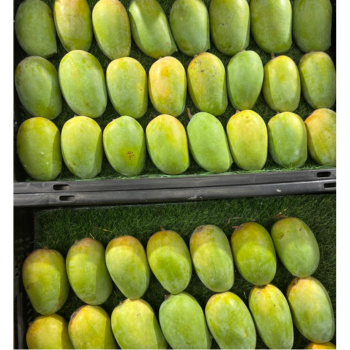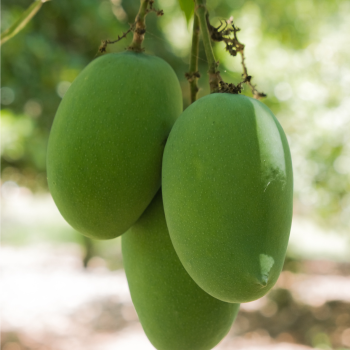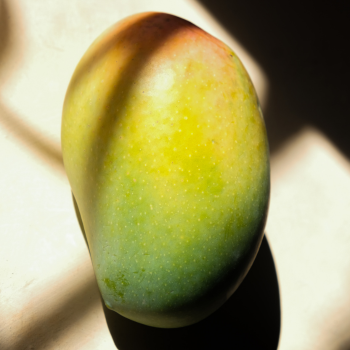
GIR KESAR
At Rare N Fresh, we are sourcing the Gir Kesar from a specific Farm which is co-located with the Gir Forest and is the only farm of its kind in India, which also follows the perma-culture ideology.
The Farm is 70+ years old and some of the Mango Trees have been giving fruit for over 4 decades. The uniqueness about this farm and hence its Gir Kesar, is that the Lions and the entire population of Birds and Animals of Gir Forest are not prevented from treating this farm as an extension of the forest and hence their ecosystem. This ideology emanates from the belief that the health of the ecology and ecosystem of the area is directly linked to the health of the apex predator, the Asiatic Lion in this case. To learn more, please visit: WJF
The vibrant saffron hue and sinfully sweet taste of the Gir Kesar mango puts it on the list of much loved and sought-after mangoes of India. Titled by the locals as the ‘Queen of Mangoes’, this delightfully bright and delicious mango finds its place among the country’s five best indigenous varieties.
Gir Kesar mango derives its name from the region where it is widely grown i.e., all talukas of Junagadh district particularly Gir territory including Gir National Park and Wildlife Sanctuary (Sasan Gir) and surrounding tehsils of Dhari and Khambha of Amreli district. Records state that this mango is grown in about 20,000 hectares with an annual production of 2 lakh tonnes.
According to the locals, this particular variety of mango made its way from Saurashtra perhaps somewhere in the 1800s. A farmer by the name of Shalebhai noticed this variety growing in his farm in Mangrol. The large-sized and long beaked fruits in the bunch were hard to miss and Shalebhai presented these fruits to Nawab Mohammad Mahabat Khanji II, the ruler of the princely state of Junagadh.
The king and his ministers praised the mango and said it was very sweet, flavoursome, fibreless with a flat stone and far superior to other mango fruits. The king called it Salebhai ni ambadi. The king then ensured that grafts were prepared from the mother tree and planted in adjoining areas. This variety was called Salebhai ni ambadi till the reign of Mohammad Mahabat Khanji III wherein a gifted Garden Superintendent of the Junagadh State, Shree. A.S.K. Ayengar evaluated this variety scientifically and concluded that the visual characteristics (shape, skin colour and change in pulp colour with reduced beak length) are most unusual. The rich saffron coloured pulp prompted him to call this mango Kesar. He planted grafts of this variety in Girnar Taleti as well as in the gardens of Junagadh like Lal-Dhori and Sakkarbaug.
The agro-climatic factors of Junagadh like the well-drained soil rich in calcium and organic matter, semi-arid weather conditions, natural recharging from the pure waters of Hiran, Shetrunji, Datardi, Shingoda, Machhundri, Godavari and Raval rivers that flow through the Gir Forest, dense forest cover and undulating topography are conducive for the cultivation of Gir Kesar.
The Gir Kesar mango trees are hard, single stemmed, slow-growing and evergreen. They can live for 200 to 300 years and rise to a height of about 50 feet. The mango graft takes about 3 to 4 years to start fruiting. This variety has a higher yield potentiality as compared to other native varieties. The average annual yield is 150 to 200kg/tree.
The state government has done a magnificent job over the years to educate farmers to use better agro techniques, avoid the use of chemicals to aid ripening of the fruit and overuse of pesticides and chemicals. An exclusive yard meant for the sale of Gir Kesar mango has been set up in Talala that functions for only three months in a year. The average annual sale is estimated to be around 16,000 tonnes.
Gir Kesar is harvested between May – June. Generally, these fruits are plucked during the early morning hours or late evening to increase its shelf life. Gir Kesar is renowned for its shape, gloss, taste, aroma, pulpiness and saffron colour. This oblong fruit has very good sugar/acid blend, TSS of about 18 – 22 °Brix and acidity of 0.25 to 0.27 percent. It has a high content of Vitamin A and Vitamin C.
This native variety of Gujarat received the Geographical Indication Tag (GI) in 2011.












